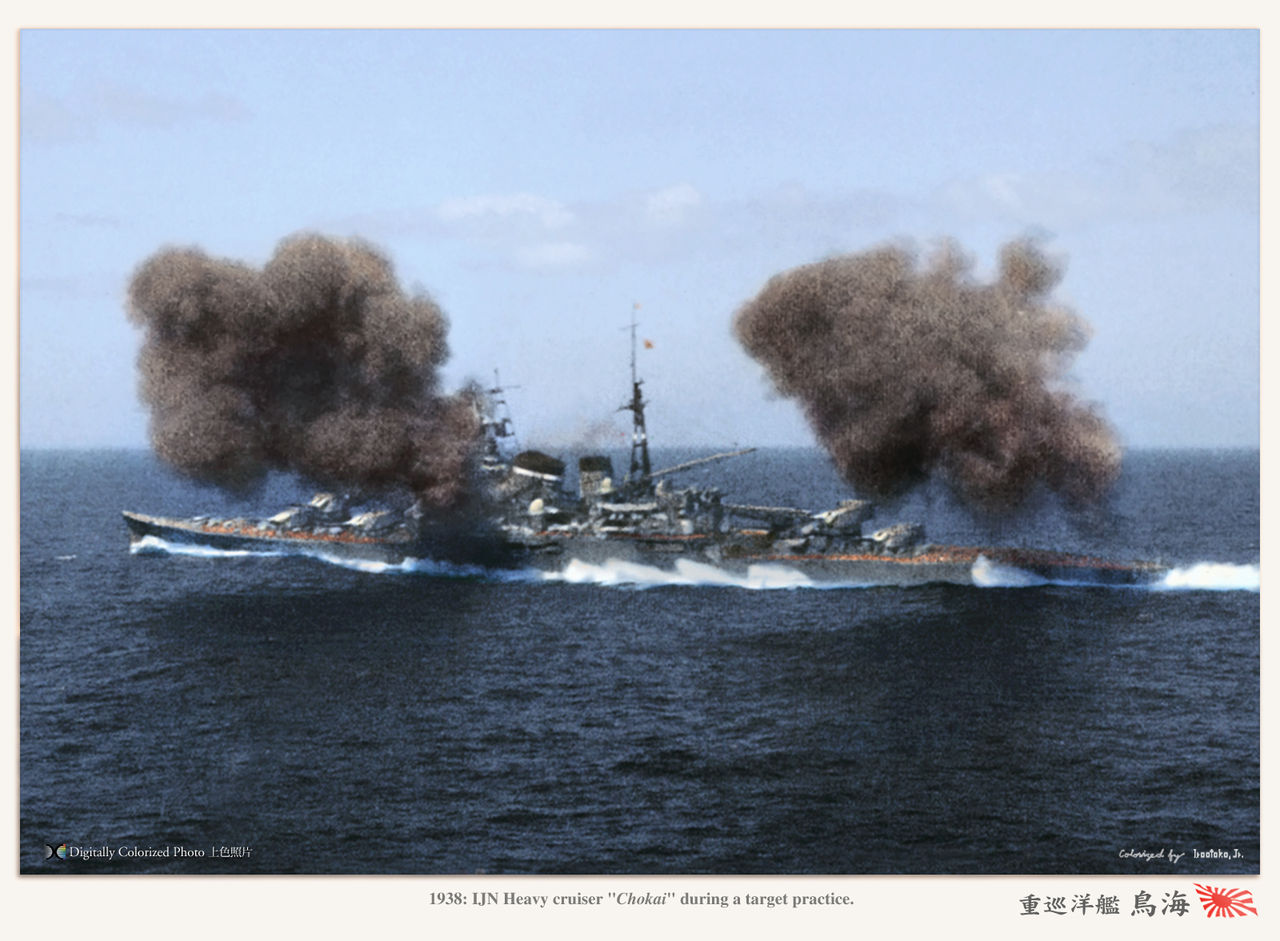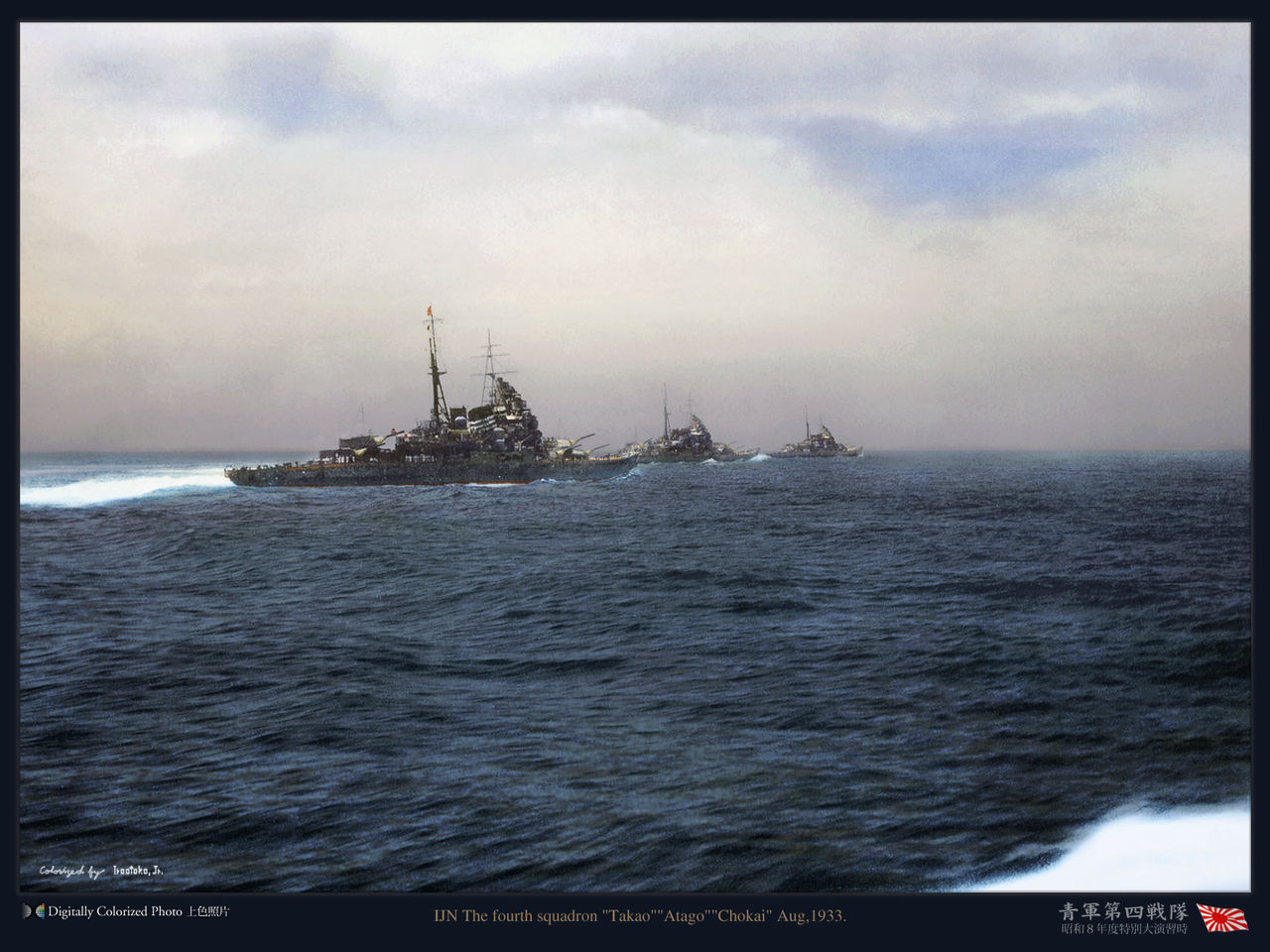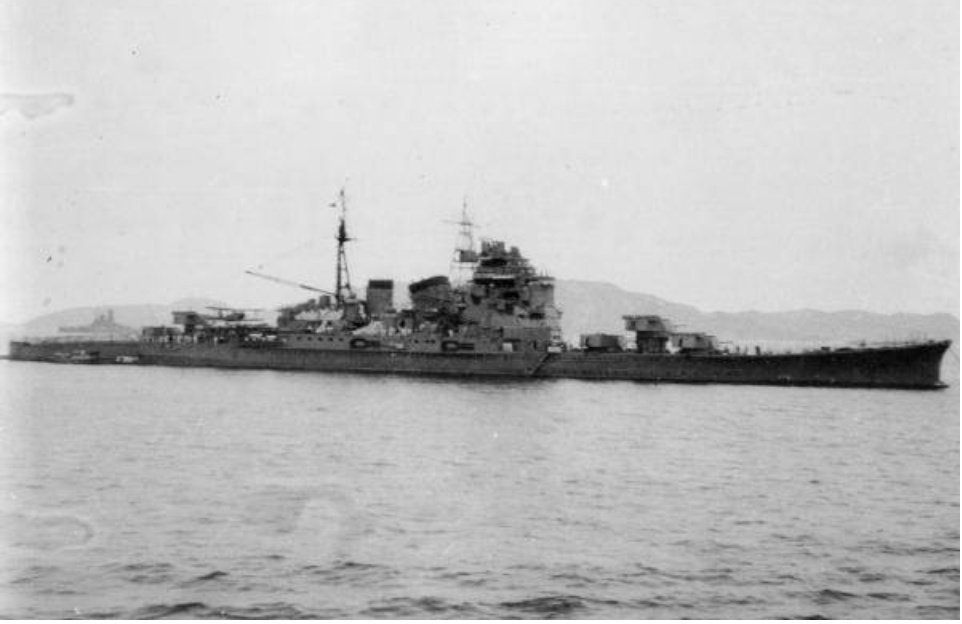- Yes
- Yes, for premium
- Yes, for event / gift
- No
Classification:
Sub Category: Heavy cruiser
Class: Takao-class
History:
Spoiler
Introduction
Takao-class was an improved version of the Myōko-Class and was distinguished by a massive protected bridge which would have been appropriate for a battleship. The warships of this class were the largest cruisers in the Combined Fleet and were the culmination of the design principle established by Hiraga with the experimental light cruiser IJN Yūbari. The design was developed by Taisa Fujimoto who had succeeded Shosho Hiraga as head of the Basic Design Section of the Navy Technical Department. Torpedo launchers were placed at upper deck level in rotating mounts to hopefully prevent loss of the ship in the event of a hit in the torpedo room. The resulting explosion would be directed upward and outward instead of downward into the hull. Unlike the preceding class, the Takao-class had an upright second funnel which made them easy to identify. The main guns could be elevated to 70 degrees making them useful against aircraft. Due to the Japanese practice of trying to do too much with limited displacement, the cruisers of this class were top-heavy.
IJN Chōkai was laid down at Mitsubishi’s shipyard on 26 March 1928. The cruiser was named after Mount Chōkai, located in the Tōhoku region. Launched on 5 April 1931.
In wartime configuration IJN Chōkai was 203.8 meters long and had a beam of 19 meters. IJN Chōkai had a mean average draft of 6.57 meters and a standart displacement 11,350 tons. Full war load was 15,205 tons. Twelve Kanpon boilers drove four sets of single-flow impulse type geared turbines providing a total 130,000 horsepower turning four shafts with three-bladed propellers. Top speed was 35.5 knots. Complement was up to 824 officers and men.
Takao-class side armor was 10.2/12.7 cm thick. The armored deck was 32-35 mm thick, and the bridge was protected by 14-16 mm armor plates.
All four cruisers were commissioned between 30 March 1932 and 30 June 1932. They were registered at the Yokosuka Naval Yard until they were removed from the navy list. They replaced the earlier Myōko-class heavy cruisers in CruDiv 4 of the Second Fleet. Between 31 May 1932 and 2 June 1938, the four heavy cruisers took part in training and fleet maneuvers, during which their top-heaviness became evident, leading to the rebuilding of IJN Takao and IJN Atago at Yokosuka in 1938 and 1939. The modifications essentially created new ships that had new profiles and were superior to the earlier models in the balance among armament, speed, and defense. IJN Maya and IJN Chōkai were never modified as completely as the other two heavy cruisers.
World War II
Before the start of the Pacific War IJN Takao, IJN Atago, IJN Maya, and IJN Chōkai joined battleships Kongō and Haruna of BatDiv 3 in the Pescadores Islands as the main body of the Southern Area Force under Admiral Kondo. This group provided distant cover for early war operations in Malaya and Borneo.

On 7-8 August 1942, Chōkai departed the Moewe Passage with CruDiv 6 for Rabaul. Embarks Vice Admiral Mikawa and staff, then proceeds through the “Slot” towards Guadalcanal with light cruisers IJN Tenryū and IJN Yūbari and destroyer IJN Yūnagi. The submarine USS S-38 sights the IJN force in St. George’s Channel, but is unable to attack.
On 9 August 1942, during the Battle of Savo Island, Vice Admiral Mikawa aboard IJN Chōkai led CruDiv 6 in a night gun and torpedo action. At 23:12, IJN Chōkai, IJN Kako and IJN Furutaka each launched a floatplane to provide illumination. They soon reported three cruisers south of Savo. The Japanese approach W of Savo undetected, surprised and sunk Captain Samuel N. Moore’s USS Quincy (CA-39) and Captain (later Rear Admiral) Frederick L. Riefkohl’s USS Vincennes (CA-44) and heavily damaged Captain William G. Greenman’s USS Astoria (CA-34), Captain Frank E. Getting’s cruiser HMAS Canberra, Captain Howard D. Bode’s USS Chicago (CA-29) and USS Ralph Talbot (DD-390) and USS Patterson (DD-392). IJN Chōkai took several hits from USS Quincy and USS Astoria that knocked out her No. 1 turret and killed 34 crewmen.
On 10 August 1942, at dawn, IJN Chōkai returned to Rabaul, where Vice Admiral Mikawa’s flag was returned ashore. She was repaired by the 8th Submarine Base Unit until 17 August. The forward turret is partially restored, so that only its starboard gun becomes usable.
On 14 November 1942, from 01:30-02:00, IJN Maya and IJN Suzuya bombarded Henderson Field with 989 203-mm shells, then retired towards Shortland. Around 08:30, Captain George E. Dooley’s flight of six Marine Grumman TBF “Avenger” torpedo-bombers from VMSB-131 at Guadalcanal attacked an IJN Chōkai. She evaded all torpedoes, receiving no damage. After 10:30, IJN Chōkai is attacked by five Douglas SBD-3 “Dauntless” dive-bombers from USS Enterprise (CV-6) VB-10, led by LtCdr James A. Thomas. Ensign Edwin J. Stevens and Ensign Jefferson H. Carroum scored two near misses off Chokai’s starboard side. The concussion floods some compartments and two boiler rooms are temporarily disabled, but the cruiser is still capable of 29 knots, arriving at Shortland on that same day. One sailor is wounded.
The sinking of the ship
On 22 October 1944 the four Takao-class heavy cruisers steamed through the Palawan Passage at the start of the Battle of Leyte Gulf. At 06:33, Cdr (later Captain) David McClintock’s USS Darter (SS-227) sinks Vice Admiral Kurita’s flagship IJN Atago and damages IJN Takao. Kurita and his staff are picked up by Cdr Mifune Toshiro’s destroyer IJN KIshinami. Vice Admiral Ugaki assumes temporary command of the Mobile Force. Meanwhile, at 06:55, Cdr Bladen Claggett’s USS Dace (SS-247) torpedoes IJN Maya. She sinks at 07:05. At 16:20, Kurita transfers to the IJN Yamato and resumes command. IJN Chōkai is undamaged. Center Force is attacked by McClintock’s USS Darter.
IJN Chōkai is the sole undamaged unit of CruDiv 4. Vice Admiral Kurita reassigns her to CruDiv 5.
On 25 October, during the Battle off Samar, when the Japanese Center Force engaged light carriers commanded by Rear Admiral Clifton Sprague, IJN Chōkai was heavily damaged by hits from bomb-loaded TBM-1 aircraft from the light carrier USS Kitkun Bay. IJN Chōkai was so badly damaged that she had to be scuttled by torpedoes fired by the destroyer IJN Fujinami.
On 20 December 1944, the heavy cruiser IJN Chōkai was removed from Navy List.
Internal Takao-class blueprint

Protection:
- Belt/side - 102/127mm - 102/127 mm.
- Deck - 32-35 mm.
- Traverse - 76-102/76-102 mm. (bow / stern)
- Barbettes - 76 - 127 mm.
- Conning tower - 14-16 mm
- Main caliber armor - 25.4/ 25.4/25.4 mm. forehead / side / rear / roof)
- Tiller compartment - 25-51 mm.
Technical component:
- Crew - 824
- Standard displacement: 11350 t
- Full-load displacement: 15205 t
- Max length: 203,8 m
- Max width: 19,0 m
- Average draft at trial state: 6,57 m
- Main boiler: 4 TZA “Campon”
- Main engine: 12 boilers “Campon Ro Go”
- Power: 130000
- Speed: 35,5 knots
Weapon:
- 5х2 - 203 mm/50 (8") 3rd Year Type No. 2
- 4x1 - 120 mm 12 cm/45 10th Year Type
- 4x2 - 25 mm/60 (1") Type 96
- 2x2 - 13 mm/76 (0.52") Type 93
- 4x2 - 610mm Torpedo tubes
More historical photos
Spoiler



All resources:
- Eric Lacroix, Linton Wells II Japanese Cruisers of the Pacific War. — Naval Institute Press. — 1997.
- S.V. Suliga Japanese heavy cruisers (in two volumes). - Moscow: Galea Print. - 1997.
- Jane’s Fighting Ships of World War II.pdf “Jane’s Fighting Ships of World War II” by McCurtie, Francis
- THE IMPERIAL JAPANESE NAVY 6 Heavy Cruisers II book Takao, Atago, Chokai
- Waldemar Goralski Japanese Heavy Cruiser Takao. — Kagero, 2010. — 31 с. — ISBN 978-83-61220-65-7
- Jentsura, Hansgeorg (1976). Warships of the Imperial Japanese Navy, 1869-1945. Naval Institute Press. ISBN 0-87021-893-X.
- A battle history of the Imperial Japanese Navy, 1941-1945 by Dull, Paul S
- Warships In Action Japanese Heavy Cruise - Wayne Patton
- 图解日本帝国海军全舰船1868-1945(巡洋舰)下
















